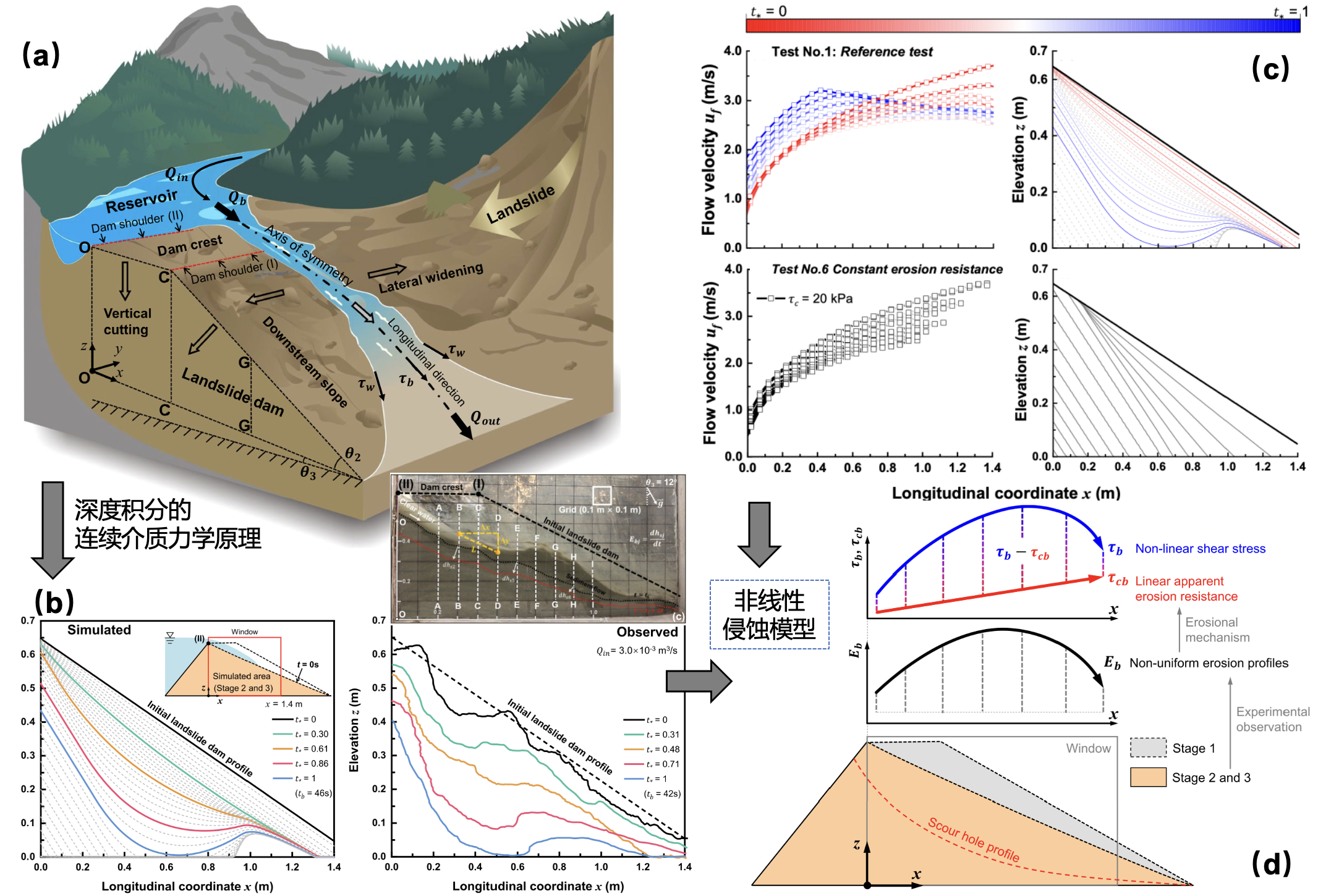Global climate change has led to more frequent extreme weather events, such as warming and rainfall, resulting in the increased risk of the “landslides-river blockage-landslide dams-outburst floods” harzard chains. At present, landslide dam breaching models have not been unified, especially when it comes to the spatial and temporal evolution of the erosion rates along the breach flow direction. In response to this problem, Prof. Zhou Gongdan (Gordon) and his team members from the Institute of Mountain Hazards and Environment (IMHE), Chinese Academy of Sciences, carried out numerous experiments and multiphase flow numerical simulations to reveal the mechanisms controlling the nonlinear evolution of the breach channel during dam breach. From this mechanical investigation, they proposed a new two-phase (solid-liquid) flow erosion model which is of great significance for the prediction of dam breach flooding disasters.
This work was made possible by the financial support of ANSO international cooperation framework and through the cooperation with the geologists from Research Institute for Geo-Hydrological Protection, National Research Council of Italy (IRPI-CNR) and Helmholtz-Centre Potsdam - German Research Centre for Geosciences (GFZ). This research has also greatly benefitted from the online technical seminar on "The dynamics mechanism of landslide dam breach", which was conducted to provide the technical support for accurate estimation of dam breach flooding hazards along the Belt and Road regions. This research is also supported by the China-Germany Mobility Programme of the National Natural Science Foundation of China (M-0145).

(a) Schematic diagram of the landslide dam breach process; (b) results of the numerical simulation (left) and experimental results (right) about the variation of erosion surface; (c) flow velocity distribution (top left) and variation of the erosion surface (top right) when the erosion resistance increases linearly; the bottom is the case when erosion resistance keeps constant, correspondingly. (d) schematic diagram of the nonlinear erosion mechanism during landslide dam breach. (Image by Gordon G.D. ZHOU)
Contact:
Prof. ZHOU Gongdan
Intitute of Mountain Hazards and Environment, Chinese Academy of Sciences
Chengdu, Sichuan, 610041, China
E-mail: Contact: gordon@imde.ac.cn
